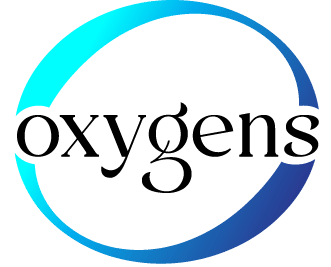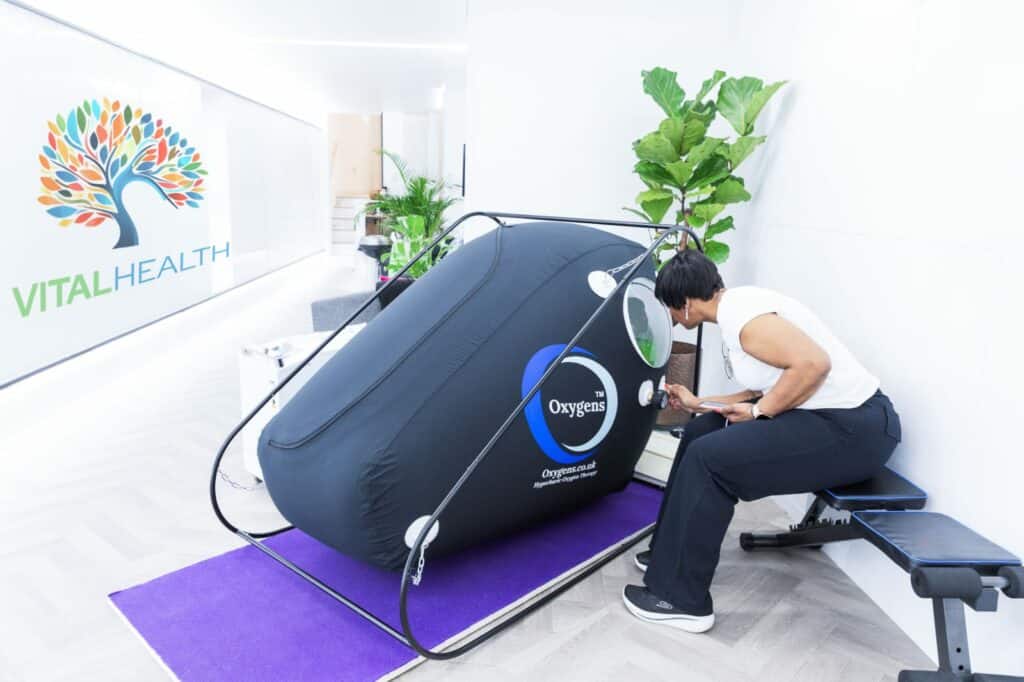When it comes to hyperbaric oxygen therapy (HBOT), higher pressure doesn’t always mean better results. While protocols using 2.0–2.5 ATA have their place in clinical settings—particularly in emergency situations such as carbon-monoxide poisoning or decompression sickness—they also carry significant risks, including oxygen toxicity and barotrauma, and require strict medical supervision, making them inaccessible to many.
Contrary to the misconception that mild HBOT is “weaker,” growing research shows that lower-pressure protocols (1.3–1.5 ATA) offer similar and distinct physiological benefits—such as reduced inflammation, improved mitochondrial function, and cognitive support—with far fewer side effects. Some researchers even suggest that longer durations at lower pressure may result in comparable oxygen loading as high-pressure sessions, but with improved safety and comfort. This opens the door to broader use, particularly in wellness, recovery, and chronic condition support.
Dr. Seyfried’s metabolic cancer model centers on the idea that cancer is driven by mitochondrial dysfunction and thrives in hypoxic (low oxygen) environments. To counteract this, he advocates combining high-pressure HBOT (typically 2.4 ATA with 100% oxygen) with ketogenic diets, intermittent fasting, and other metabolic interventions.
- High ROS Generation: At 2.4 ATA, tissues are flooded with oxygen, elevating reactive oxygen species (ROS). Cancer cells—because of their compromised mitochondria—may be more vulnerable to this oxidative stress.
- Overcoming Tumour Hypoxia: Hypoxic tumour cores become more oxygenated, potentially reducing therapy resistance.
- Synergistic Metabolic Disruption: In tandem with glucose restriction from ketogenic strategies, cancer cells may struggle more than normal cells to adapt.
Although preclinical work in animal models (e.g. glioblastoma in mice) shows promising synergy between high-pressure HBOT and metabolic therapies, large-scale human trials are lacking. Additionally, the risks—such as oxygen toxicity seizures or barotrauma—are significantly higher at this pressure level.
🌿 Why Lower Pressures (1.3–1.5 ATA) Might Be Safer and Still Effective
Dr. Jason Sonners’ Comparative Research
Dr. Jason Sonners, a clinician and HBOT researcher, recently led a controlled study directly comparing mild HBOT (1.3 ATA) and high-pressure HBOT (2.0 ATA) in healthy adults. Key findings included:
- Both protocols led to significant reductions in inflammatory cytokines, but targeted different molecules—suggesting distinct physiological effects at different pressures.
- On cognitive and mitochondrial markers, lower pressure delivered meaningful improvements—with fewer side effects.
(Oxygens, hbotusa.com, hyperbaricstudies.com)
Sonners emphasises that mild pressures can achieve cellular benefits without the increased oxidative load associated with higher ATA. His work builds on decades of clinical observation and recently published quantitative comparisons—all available in his doctoral research and public interviews.
(therapeuticsciencesjournal.org, hbotusa.com)
Broader Research Supporting Low-Pressure Effects
- A review led by Dr. Paul Harch published in Journal of Neurotrauma shows that even pressures as low as 1.04 ATA begin triggering gene expression changes, inflammation reduction, and cellular repair—debunking the myth that mild HBOT is inert.
(BH-Labs) - Clinical studies using 1.5 ATA HBOT in chronic TBI and PTSD patients demonstrated significant improvements in cognition, mood, quality of life, and brain perfusion—with minimal adverse effects.
(hyperbaricstudies.com)
Lower pressures also avoid the most serious risks seen at 2.0+ ATA, including seizure and pulmonary oxygen toxicity.
(en.wikipedia.org)
📊 Mild vs. High Pressure: A Comparison
| Pressure Range | Typical Uses | Benefits | Risks |
|---|---|---|---|
| 1.3–1.5 ATA (mHBOT) | Home wellness, recovery, neuro support, post surgery, wound healing, general health | Reduced inflammation, improved cognition, mitochondrial support, stem cell mobilization | Low; occasional mild ear pressure or discomfort; no major oxidative toxicity |
| 2.0–2.4 ATA (Clinical) | Conditions requiring rapid oxygen to system: decompression sickness, carbon-monoxide poisoning, arterial gas embolism, | Faster oxygenation, enhanced stem cell response, rapid anti-inflammatory effect in severe cases | Higher risk of oxygen toxicity (seizure, lung or ear injury), strict medical setup needed |
🤔 So Which Should You Choose?
- For general wellness, cognitive enhancement, and safer chronic support: Lower pressures (1.3–1.5 ATA) are often sufficient and better tolerated.
- For targeted medical protocols, where the goal is oxidative disruption: 2.0–2.4 ATA may offer more potency—but only under medical supervision and with full risk awareness.
https://oxygens.co.uk/whats-the-difference-in-high-and-low-pressure-hyperbaric-oxygen-therapy/The work of Dr. Sonners and others makes it clear: mild HBOT is not weak. It delivers real, measurable effects with fewer risks, making it a strong option for many users and conditions.
(Hyperbaric Central, Oxygens)
🧭 Final Thoughts
Dr. Seyfried’s advocacy for 2.4 ATA stems from a theoretical framework around metabolic cancer treatment and is rooted in animal studies. In contrast, recent human-focused research—including Sonners’ comparative work—supports the efficacy of lower-pressure HBOT for inflammation control, mitochondrial health, cognitive benefit, and improved safety.
If you’re considering HBOT protocols, discuss your goals—wellness, recovery, neurological support, or oncology—with a medical professional who can advise on the most appropriate pressure level for you.

